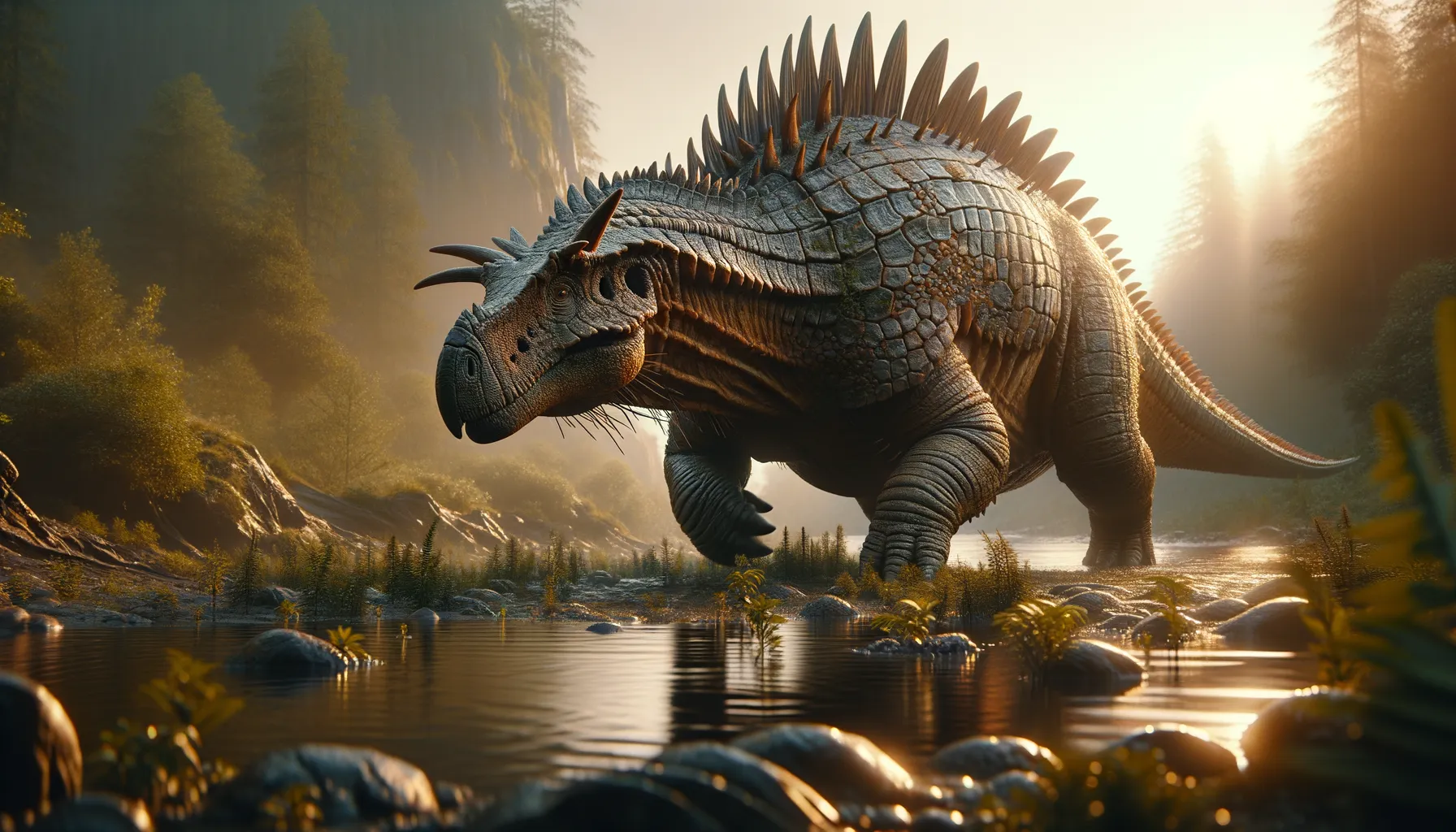
Palaeoscincus
Armored giant of the Cretaceous era!
Period
Cretaceous
Length
About 5 meters long.
Height
Approximately 1.5 meters tall.
Weight
Estimated up to 2000 kilograms.
Palaeoscincus was a heavily armored dinosaur known for its protective body covering, resembling the modern armadillo. This dinosaur roamed the earth during the Cretaceous period, featuring a body built for defense rather than speed. Its robust, tank-like build helped deter predators, contributing to a unique survival strategy. Its plant-based diet and slow movement are representative of many similar species of its time.
Diet
Palaeoscincus was a herbivore, primarily feeding on low-lying vegetation. Its beak-like mouth helped it strip leaves and soft plants efficiently.
Hunting
Being a plant-eater, it did not hunt but grazed on available vegetation. Its primary focus was on avoiding predators rather than hunting prey.
Environmental challenges
Palaeoscincus faced the challenge of finding abundant food sources in its environment. The climate changes during the Cretaceous period influenced the availability of plant life. Evolving ecosystems meant this dinosaur had to adapt to changes in vegetation type and distribution. Additionally, it had to defend itself against predatory dinosaurs despite its slow movement.
Speed
Likely slow due to its heavy armor.
Lifespan
Possibly around 30-40 years.
First discovery
Its fossils were first discovered in the 19th century.
Fun Facts
- Palaeoscincus was a dinosaur that lived around 75 million years ago during the Late Cretaceous period.
- This dinosaur is known for its armored body, which helped protect it from predators.
- Palaeoscincus was a herbivore, meaning it fed on plants.
- Despite its armor, Palaeoscincus could move quickly due to its strong legs.
- The name 'Palaeoscincus' means 'ancient skink', reflecting its lizard-like appearance.
- Fossils of Palaeoscincus have been found in North America, especially in areas like Montana and Alberta.
- Palaeoscincus is closely related to another armored dinosaur called Ankylosaurus.
Growth and Development
From hatchling to adult, its development focused on growing its protective armor. The initial stages required rapid growth to avoid predation. As it matured, the dinosaur's bones strengthened to support its heavy armor.
Habitat
Palaeoscincus lived in lush, forested areas that provided enough vegetation for feeding. Its environment included floodplains that supported a diverse ecosystem. These areas were rich in plant life, ideal for its herbivorous diet. Water sources in its habitat were essential for survival as well.
Interaction with other species
Palaeoscincus likely kept to itself, protected by its armor against predators. It coexisted with various plant-eating and carnivorous dinosaurs. Its presence would not significantly disturb other plant-eating dinosaurs, but it had to be cautious of predators. It relied on its skin armor as a passive defense during interactions.
Natural lifespan
The natural lifespan was likely around 30 years.
Reproduction
Palaeoscincus likely laid eggs, as many dinosaurs did, in nests on the ground. It may have cared for its young during the early stages of life. Its reproductive strategy focused on producing multiple offspring to increase survival chances.
Social behaviour
It was likely solitary, focusing more on feeding than social interaction. If social behavior occurred, it might have included minimal interaction for breeding purposes. The armored nature made it less dependent on group defense strategies.
Fossil locations
Fossils of Palaeoscincus have primarily been found in North America. These findings include parts of its skeleton and the distinctive armor plates. Such discoveries have helped paleontologists better understand its lifestyle and physical appearance. Fossil records continue to provide insights into the environment it inhabited.
